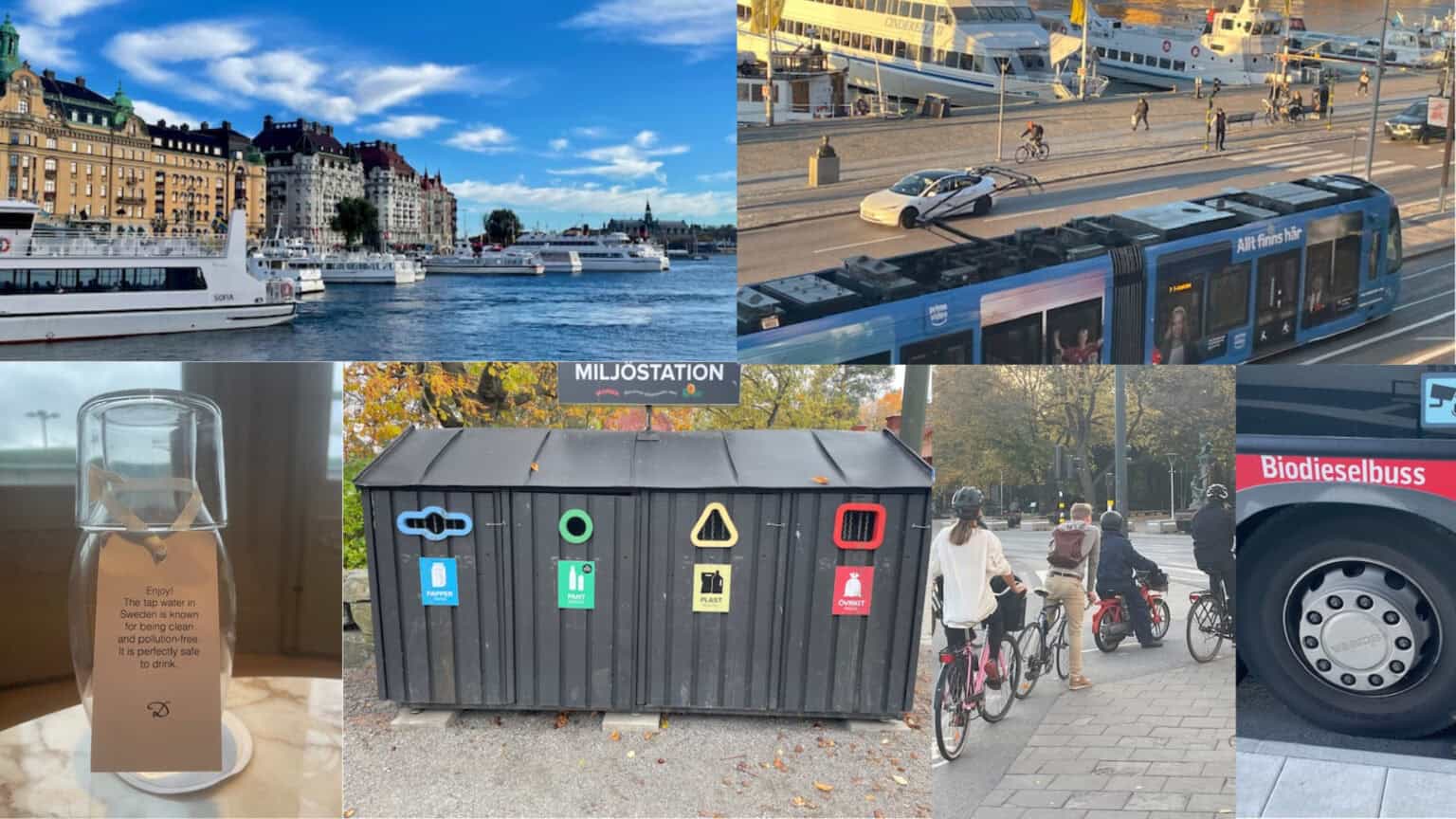Greengage’s CEO and Founder, Andrew Perolls recently visited Stockholm and was taken aback by how effortlessly sustainability is integrated into the city. He tells us about his trip and the fantastic initiatives he experienced while visiting. Over to you, Andrew…
Hearing that the Swedish city of Stockholm has received international recognition as the greenest city in the world in 2023 by City Monitor, I was curious to find out more.
Visiting central Stockholm in the morning rush hour I couldn’t help but be struck by the lack of incoming cars. In their place is a constant stream of bikes and electric scooters – and pedestrians emerging from the metro, buses, and trains.
Public transportation (all run on renewable energy) accounts for 80% of all trips taken in the city, significantly reducing traffic congestion and emissions. Travelling under pedal power or by scooter is fantastic, with extensive wide two-way cycle lanes separated from road traffic. It’s a carrot and stick approach – amazing transport infrastructure plus a congestion charge to discourage motorists.
For those that need to use a car (and for vans, lorries and buses) bio-fuel generated from sewage is available at filling stations around the city. Apparently one hundred people going to the toilet powers one car!
There’s a theme here of focussing on reducing the need for fossil fuels to lower carbon emissions. In fact, Stockholm has set the target of becoming free of fossil fuel use by 2049. To help achieve this, the city has invested in renewable energy sources such as wind and solar power (many public buildings have solar panels fitted) which means that over 70% of the city’s energy needs is derived from renewable sources.
I love the innovative thinking that has led to using waste heat generated from data centres, supermarkets and stadiums to provide heat for city residents. The wasted heat from just one data centre can serve the heating needs of over 1,000 flats.
In moves the UK could do well to think about, Stockholm has enforced regulations to ensure buildings are energy-efficient – using sustainable building materials, insulation, and features like green roofs. Building owners are financially incentivised to retrofit buildings to improve energy efficiency.
In the UK, we still struggle to achieve a waste recycling rate of 50%. Anything we can learn from Stockholm on this important issue? The city has the goal of becoming a zero-waste city. A comprehensive waste management system has led to over 99% of Stockholm’s waste being recycled or used for energy production – landfill is almost non-existent. Innovation in this area includes a “pay as you throw” system, encouraging residents to reduce their waste. In fact, waste is used as a valuable resource for heating and being converted to biogas, fertiliser and other materials.
There’s another green angle. Stockholm is undoubtedly a beautiful city combining rich history, cultural sophistication and natural wonder. Built on a number of islands, water is a natural backdrop along and so is an abundance of green spaces. Stockholm has a goal of having a park or green space within 300 meters of every resident. This provides residents with opportunities to connect with nature and boost wellbeing.
It’s clear that Stockholm have deservedly earned their recognition as a green city but not without considerable investment and having the discipline to stick to a long-term plan. What strikes me is that this couldn’t have been done without the collaboration of state, business and the public.
Experiencing Stockholm and observing day to day life for a few days it’s clear to me that residents have embraced individual behavioural change, actively participating in the city’s sustainable initiatives to make it all work. The city has provided resources and support to make the changes possible.
As I leave Stockholm I reflect on this great example of transformation into a sustainable green city. The success in creating sustainable transport infrastructure, the renewable energy transformation, energy-efficient buildings, waste reduction and green spaces. It also brings home to me how individual action is so important in achieving it. All the components have aligned in Stockholm to improve quality of life and wellbeing in this great city and sustainability is no longer seen as a project but just as the new normal.
For more insights, follow us on LinkedIn. To find out more about this, please get in touch with us.



